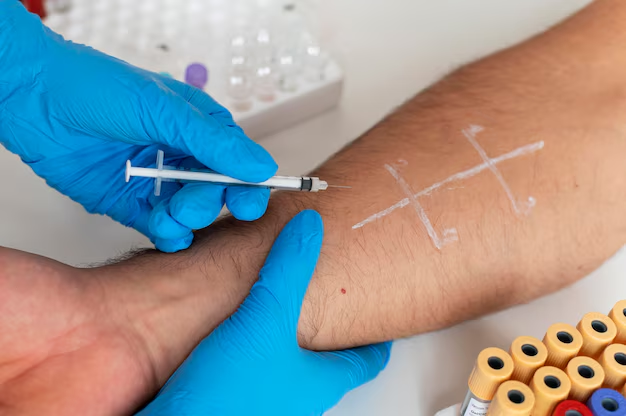Definition of Neuropathic Pain:
Neuropathic pain is caused by damage or dysfunction within the nervous system, including the brain, spinal cord, or peripheral nerves. It happens when the nerves are hurt or damaged, and therefore, they send the wrong signals to the brain, which the brain interprets as pain. Several illnesses, such as diabetes, shingles, or central nervous system disorders, can trigger neuropathic pain. People who are suffering from neuropathic pain may have burning, tingling, or shooting sensations, which could be either constant or intermittent. Because neuropathic pain is complex and persistent, it often requires a combination of treatments to manage effectively.
What causes Neuropathic Pain?
Neuropathic pain is a chronic disorder caused by damage or dysfunction in the nervous system. The underlying causes of nerve pain are highly varied and can result from metabolic diseases, infections, physical injuries, or chemotherapy.
Major Causes of Neuropathic Pain
Disease or Disorder
- Diabetes: One of the major causes of neuropathic pain, particularly diabetic neuropathy, involving peripheral nerves
- Alcohol Use Disorder: Long-term alcohol consumption may lead to nutritional deficiencies and direct nerve toxicity, causing nerve pain symptoms.
- HIV/AIDS: Both the virus and antiretroviral therapy may harm nerves.
- Facial Nerve Conditions: Conditions like trigeminal neuralgia cause extreme facial nerve pain.
- Central Nervous System Disorders: Conditions like stroke, Parkinson’s disease, and multiple sclerosis (MS) may disrupt pain signaling, causing neuropathic pain.
- Complex Regional Pain Syndrome (CRPS): A chronic pain syndrome usually after injury or surgery, with nerve dysfunction.
- Chemotherapy Drugs: Chemotherapy drugs such as cisplatin, paclitaxel, and vincristine are known to induce peripheral nerve damage.
- Radiation Therapy: May damage nerve tissue in the irradiated area, resulting in permanent pain.
- Tumors: Masses compressing nerves can interfere with nerve impulses and cause recurring pain.
Infection
- A syphilis infection can also lead to burning, stinging, and unexplained pain. People with HIV may experience this unexplained pain.
- Shingles (Postherpetic Neuralgia): Following a shingles infection, residual nerve damage can lead to persistent pain in the infected area.
Injury
- Amputation: Can cause phantom limb pain, a form of neuropathic pain whereby the brain still perceives pain in the amputated limb.
- Spinal Nerve Compression or Inflammation: Bulging discs or spinal stenosis can press on nerves, resulting in severe or radiating nerve pain symptoms.
- Physical Trauma or Surgery: Trauma from accidents or during surgery can damage nerves, in some cases causing chronic neuropathic pain.
Symptoms of Neuropathic Pain
Neuropathic pain may produce a range of nerve pain symptoms, such as:
Shooting, burning, or stabbing pain
● Tingling, numbness, or a “pins and needles” sensation
● Spontaneous pain without an obvious cause
● Evoked pain from stimuli that are normally non-painful (e.g., light touch, cold)
● Abnormal or unpleasant sensations persist.
● Sleep disturbance due to pain
● Emotional problems, such as anxiety or depression, are associated with chronic pain.
These symptoms tend to be found with the pathologies of nerve pain, such as diabetes, trauma, or infection. Proper neuropathic pain treatment is needed for relief.
Diagnosis of Neuropathic Pain
Neuropathic pain is a complex condition resulting from damage or disease affecting the somatosensory system. It is characterized by various nerve pain symptoms, including spontaneous pain, allodynia (pain from normally non-painful stimuli), and hyperalgesia (increased pain from painful stimuli). Diagnosing neuropathic pain typically involves a thorough clinical evaluation, including a detailed patient history and physical examination to identify these characteristic symptoms. Additional diagnostic tools, such as quantitative sensory testing and neurophysiological assessments, may be employed to confirm the presence of neuropathic pain and rule out other potential causes of nerve pain.
In clinical practice, diagnosing neuropathic pain concentrates on determining the nature of nerve pain symptoms and how they affect the quality of the patient’s life. This includes evaluating the location, quality, intensity, and temporal variation of pain and any associated features such as insomnia or mood disturbances. The application of standardized screening instruments, such as the Neuropathic Pain Scale and the pain DETECT questionnaire, may assist in the diagnosis by contributing to the differential diagnosis of neuropathic pain. In the end, a multimodal approach that considers the patient’s history, clinical presentation, and pertinent diagnostic testing would be necessary to properly diagnose neuropathic pain.
Treatment of Neuropathic Pain
Neuropathic pain treatment involves a multidisciplinary approach customized to the cause of nerve pain and the presenting symptoms. The aim of neuropathic pain treatment is to relieve pain, restore function, and improve the patient’s quality of life.
Medications for Neuropathic Pain
Medications are usually the initial treatment of choice in the management of neuropathic pain. Over-the-counter drugs such as nonsteroidal anti-inflammatory drugs (NSAIDs), Aleve, and Motrin, can be helpful to a certain extent but are not generally effective for the symptoms of nerve pain because they don’t correct the underlying damage to the nerve. Prescription medication is often resorted to for more specific relief. Whereas opioids work well for pain that is other than neuropathic, they are generally best avoided for treating neuropathic pain because their effects are less robust, and dependency can be an issue.
Topical medications like lidocaine patches and capsaicin creams can decrease pain by anesthetizing the area. Besides, antidepressants are effective in controlling both the pain and the emotional pain, like depression and anxiety, that usually follow chronic pain. Tricyclic antidepressants and serotonin-norepinephrine reuptake inhibitors are usually prescribed for this. Anticonvulsants, such as gabapentin and pregabalin, are another significant treatment. These anti-seizure medications also change pain messages in the nervous system, alleviating nerve pain. The precise mechanism is not known, but they are among the most effective treatments for neuropathic pain.
Physical Therapy for Neuropathic Pain
Along with medications, physical therapy is also a critical aspect of neuropathic pain management. Physical therapy can enhance mobility, ease muscle tension, and alleviate nerve pain. For individuals whose symptoms worsen after sitting or standing for extended periods (often in jobs that involve desk work), a physical therapist can instruct them in correct posture, stretching, and movement. These modifications prevent pain flares and enhance physical function.
Procedures and Devices
Procedural interventions can be suggested for those who fail to respond to medication or physical therapy. Nerve blocks include injecting steroids or local anesthetics directly into the nerves that transmit pain signals. Although such injections are helpful in the short term, repeated injections may become necessary over time.
In more serious instances, implantable devices can be used. These are implanted surgically and deliver electrical impulses to the brain, spinal cord, or damaged nerves. The impulses interrupt abnormal pain signals and relieve those not responding to other treatments.
Multimodal Therapy
A multimodal, comprehensive therapy treatment may provide the most effective outcome for neuropathic pain. This treatment plan integrates medications, physical therapy, psychological counseling, and, in certain instances, surgery or implants to treat the physical and emotional components of the condition. By integrating these therapies, patients can usually have more effective outcomes and overall relief.
Living with Neuropathic Pain
Living with neuropathic pain can be difficult as it often impacts daily activities, sleep, and emotional health. Nerve pain symptoms like burning, tingling, or shooting pain may persist for long periods, making it hard to find relief.
Effective neuropathic pain treatment often involves a combination of medications, physical therapy, and lifestyle adjustments. While medications like anticonvulsants and antidepressants can help manage pain, physical therapy is crucial for improving mobility and reducing discomfort. Small lifestyle changes like regular exercise and stress management can also help control pain and improve overall well-being. Emotional support is essential, as chronic pain can lead to anxiety or depression. Talking to loved ones and seeking counseling or support can provide valuable emotional relief. Managing neuropathic pain requires a holistic approach to ensure a better quality of life despite the challenges.










